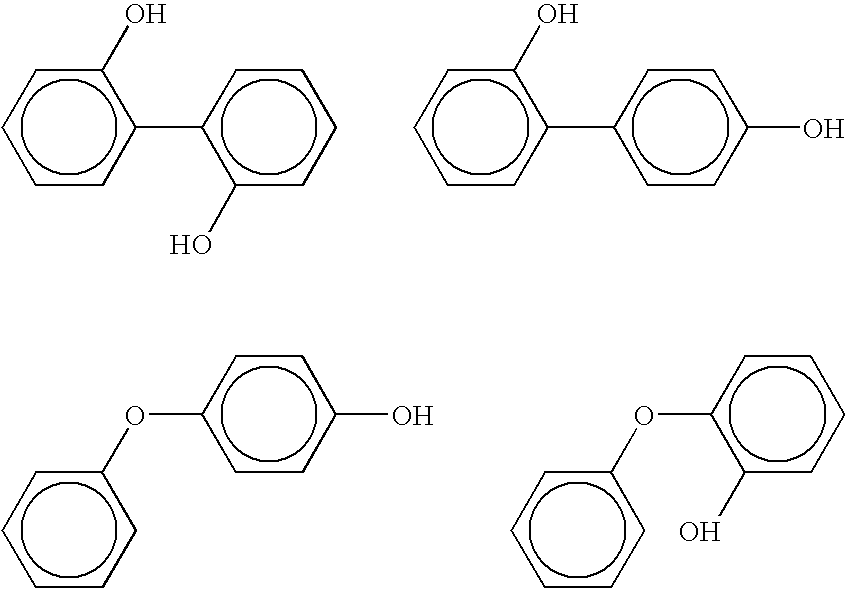Polyphenol-and protein-containing extracts of winemaking residues, and methods of using the same
a technology of polyphenols and extracts, applied in the directions of magnoliophyta medical ingredients, plant ingredients, biocide, etc., can solve the problem of adding significantly to the cost of the formulation
- Summary
- Abstract
- Description
- Claims
- Application Information
AI Technical Summary
Benefits of technology
Problems solved by technology
Method used
Image
Examples
example 1
[0117] To remove soluble components, such as tartaric acid for example, a white wine press residue was repeatedly washed with water and then concentrated by centrifuging. The concentrate was suspended in 10 times its volume of distilled water, homogenized with intensive shearing and then autoclaved for 1 hour at 120° C. After cooling, 25% by weight sodium hydroxide solution was added to the preparation in such a quantity that a solids content of 0.8% w / v and a pH of 12.2 were established. The treated residue was then transferred to a stirrer-equipped extractor, extracted for 1 h at 90° C. and the extract obtained was separated from insoluble residue by re-centrifuging. To precipitate the proteins / tannins, the extract was adjusted to a pH of 3.5 by addition of 4n sulfuric acid, the brown-red colored solid was removed by centrifuging and dissolved in dilute sodium hydroxide solution (pH=7.5). Undissolved components were again removed by centrifuging. The solution was then dried by spr...
example 2
[0118] Example 1 was repeated using a red wine press residue. The extract was then dewatered by freeze drying. Based on 100 g press residue, 15.5 g extract were obtained. 100 g extract contained 44 g proteins and 3.0 g tannin (expressed as cyanidin).
example 3
Cell Protecting Effect Against UV-A on Human Fibroblasts Cultured in Vitro
[0119] Background: UV-A rays (from 320 to 400 nm) penetrate into the dermis where they lead to oxidation stress as demonstrated by lipoperoxidation of the cytoplasm membranes. The lipoperoxides are degraded to malonaldialdehyde which will crosslink many biological molecules, such as proteins and nuclein bases (enzyme inhibition or mutagenesis).
[0120] Method: To carry out these tests, a defined culture medium containing the fibroblasts was inoculated with fetal calf serum and the plant extract (in the defined medium containing 2% serum) was added 72 hours after inoculation.
[0121] After incubation for 48 hours at 37° C. (CO2 content 5%), the culture medium was replaced by a sodium chloride solution and the fibroblasts were exposed to UV-A (365 nm, 15 J / cm2; tubes: MAZDA FLUOR TFWN40).
[0122] At the end of the exposure time, the MDA level (malonaldialdehyde level) in the supernatant sodium chloride solution wa...
PUM
| Property | Measurement | Unit |
|---|---|---|
| temperature | aaaaa | aaaaa |
| temperature | aaaaa | aaaaa |
| temperature | aaaaa | aaaaa |
Abstract
Description
Claims
Application Information
 Login to View More
Login to View More - R&D
- Intellectual Property
- Life Sciences
- Materials
- Tech Scout
- Unparalleled Data Quality
- Higher Quality Content
- 60% Fewer Hallucinations
Browse by: Latest US Patents, China's latest patents, Technical Efficacy Thesaurus, Application Domain, Technology Topic, Popular Technical Reports.
© 2025 PatSnap. All rights reserved.Legal|Privacy policy|Modern Slavery Act Transparency Statement|Sitemap|About US| Contact US: help@patsnap.com


